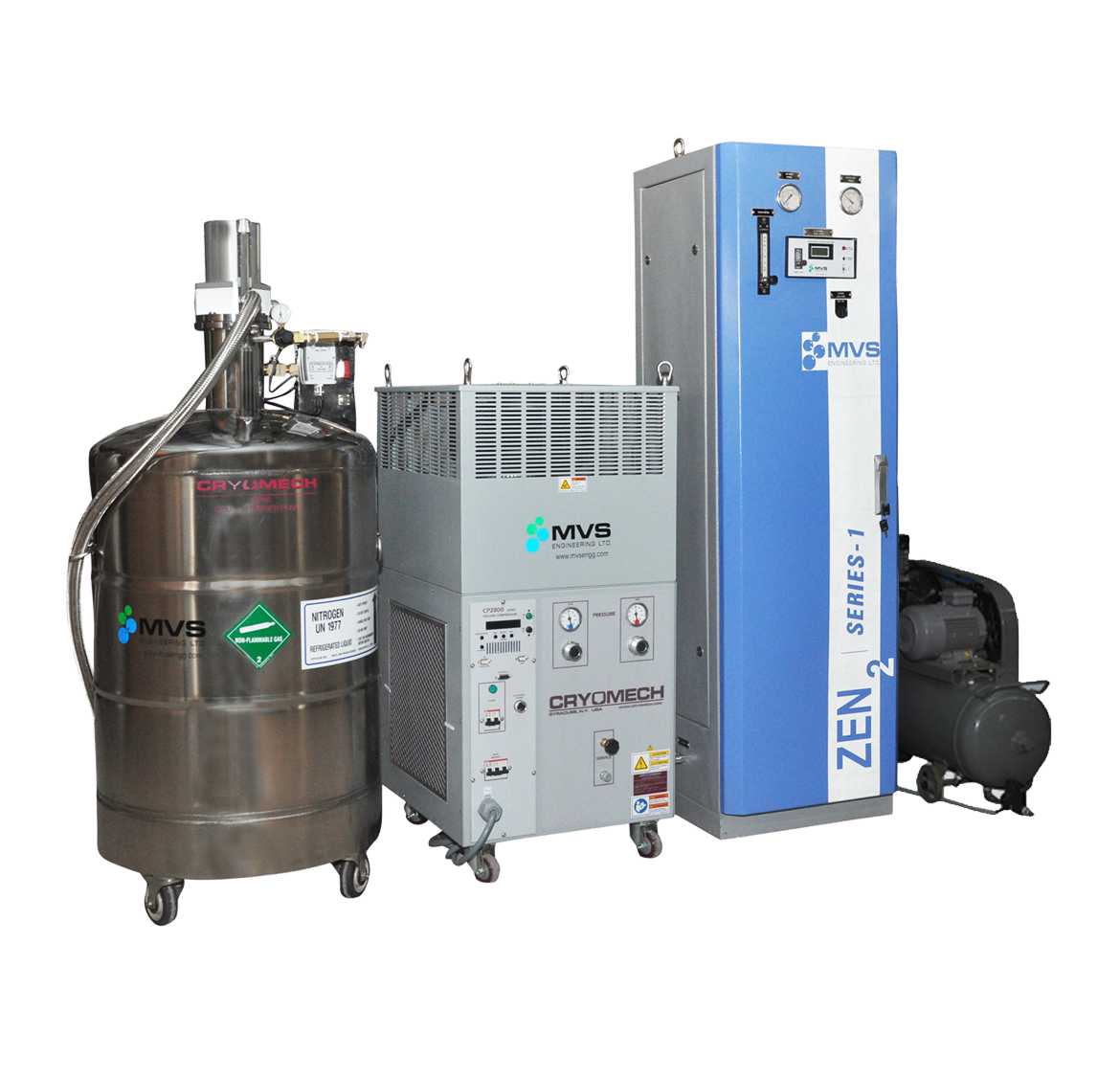Do you want to make your own high-quality Liquid Nitrogen as and when you need it? On-site generation is one easy and great solution for you.
Liquid Nitrogen generation is effortless with on-site generation systems. With MVS on-site plants, the user can experience the ultimate convenience of producing liquid Nitrogen at their own facility without any hassle and never run out of it.

With ease and convenience comes a little danger involved in the mishandling of liquid Nitrogen. Due to its extremely low boiling point (-196,79°C), the vapour released by liquid Nitrogen instantly transforms into a gaseous state when it comes in contact with the atmospheric air.
This modern technology has huge implications for applications like medical, industrial and laboratory. It eliminates the hassle related to nitrogen cylinder delivers, inconvenient, drive up costs and potential problems with contamination and evaporation.
Generators manufactured using modern technologies have control systems that give all the necessary information required to make sure the user can use the plant efficiently. An uninterrupted supply of liquid Nitrogen is available.
What are the benefits of using on-site plants for Liquid Nitrogen generation?
- Extremely Easy to Use
- Built-in Air Compressor
- Built-in Oxygen Analyzer with Alarm
- PSA Technology
- Built-in Dewar tank
- Vacuum Prevention System on Dewar
- Color Graphic Touch Screen
- Low Noise Level
Which industries require liquid Nitrogen?
- Cooking schools
- Bacteria, virus manipulation
- Cells Preservation (tumour, white blood, lymphocytes, platelets, bone marrow)
- Cryotherapy (e.g. removal of skin abnormalities)
- Superconductivity coolant
- Cryogenic insulation in the oil industry (e.g., freeze water and oil pipes when a valve is unavailable to block fluid flow to the work area)
- Industries of different kinds (shrink-welding, CCD cameras, NMR spectrometers and MRI systems, highfield superconducting magnets, spacecraft thermal testing, shielding materials from oxygen exposure, controlled evaporation or very low-temperature reaction processes in chemistry, injecting Nitrogen just before sealing or capping bottles or containers, freezing and transport of food products)
- Cryopreservation of biological samples (e.g. organs, tissues, human and animal semen, fertilized eggs)
- Livestock industries (cattle branding)
- Instant freezing, ice cream, liquid nitrogen cocktails, food experiments and preparation)

